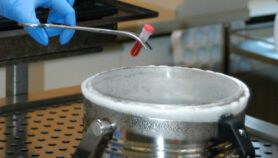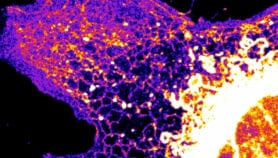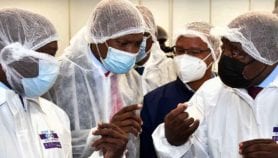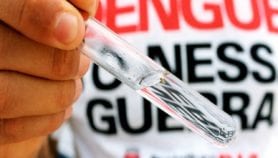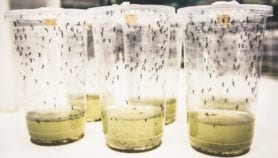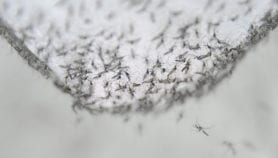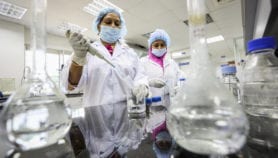By: Rachel Mundy
Send to a friend
The details you provide on this page will not be used to send unsolicited email, and will not be sold to a 3rd party. See privacy policy.
A potential malaria vaccine produced by genetically-engineered algae could allow people to grow their own vaccine at homes, and would be especially useful in rural parts of the developing world, say its developers.
The vaccine works by blocking the reproduction of the Plasmodium falciparum parasite, which causes malaria when transmitted to humans by mosquito bites.
There is still no effective vaccine against the disease, although several are in development.
But some of these vaccine candidates are complex proteins and difficult and expensive to produce in bacterial or mammalian cell cultures.
Now a team of US scientists have reported in PLoS ONE this month (16 May) that vaccine candidates could be produced cheaply in algal cells, and that they could halt transmission of malaria from mosquitoes to humans.
Stephen Mayfield, of the San Diego Center for Algae Biotechnology at the University of California, engineered an edible green microalgae Chlamydomonas reinhardtii to produce the protein Pfs25, normally produced by the malaria parasite during its life stage in the mosquito gut.
Joseph Vinetz, a professor of medicine at the University of California San Diego, then showed that injecting mice with these proteins stimulated the production of antibodies that can block the parasite’s reproductive cycle in a mosquito’s gut, preventing the transmission of the parasite from mosquitoes to others hosts.
The vaccine would be given to humans, but it would only act once inside the mosquitoes.
"You can think of humans as antibody delivery devices to mosquitoes," said Vinetz.
"This research is a complete game-changer for the developing world, because … the vaccine could be manufactured locally, at minimal cost, and orally self-administered," said Mayfield.
The researchers say people could grow the vaccine in their backyards by putting a bag of algae into a water tank and allowing it to grow in sunlight. The vaccine-containing algae could then be eaten, for example by adding it to cakes, said Vinetz.
Edible algae are already cultivated in many regions of the developing world, including Africa, China and India.
This would bypass the problems of delivery, distribution, production, and refrigeration that are associated with conventional vaccines, added Vinetz.
Colin Sutherland, from the UK-based London School of Hygiene and Tropical Medicine, said that the algal system looks "very promising" in solving the technical challenge in producing these proteins.
But Peter Seeberger, director of the Max Planck Institute of Colloids and Interfaces in Germany, cautioned that there is a possibility of resistance developing.
"The best strategy would be to develop a vaccine that combines different modes of action, targeting different aspects of the parasite at once," he told SciDev.Net. "The prime problem is whether the protein will actually work — not cost or production issues".
The next step is to test the safety and efficacy of giving the protein to mice in their food. With adequate funding, the first clinical trials in humans could begin as early as summer 2013.
Link to full article in PLoS ONE ![]() [1.24MB]
[1.24MB]
See below for a University of California in San Diego video about the findings:
References
PLoS ONE doi: 10.1371/journal.pone.0037179 (2012)



